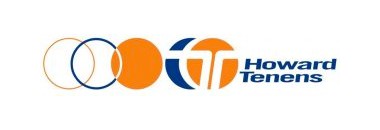Howard Tenens owns and operates over 3 million square feet of warehousing space across the UK. In line with its commitment to continually improve environmental performance, warehouse lighting was identified as a major opportunity to reduce energy consumption and increase operational efficiency.

Howard Tenens warehouse lighting improvements
Summary
Situations
Warehouse lighting is the largest single consumer of electricity in ambient warehousing. These spaces are highly controlled environments, often operating on a 24h basis. As a result, energy saving opportunities must compliment existing warehouse specifications and must not detract from their primary storage and handling function. The key goal was to further optimise lighting controls and demonstrate energy savings that would achieve a 12 month payback period.
Actions
A large, modern facility was selected with existing renewable energy technology, high skylight to roof ratio, high efficiency fluorescent lamps, control gear and integral presence combined with dimming sensors.
LCMB worked in partnership with lighting control specialist EnTech to:
- develop a plan to modify the lighting control functionality in line with observed warehouse traffic patterns, so that lighting could be switched off more quickly when not required. This included modification of time out delays for presence detection settings and optimisation of daylight detection level settings.
- install dataloggers on the lighting circuits to determine baseline power consumption prior to reprogramming.
- re-programme light sensor through a remote control unit to minimise disruption to warehouse operations.
- test lights to ensure that the new programme settings had taken effect.
- monitor and verify improvements in performance, taking into account changes in warehouse traffic between the pre and post intervention periods. This was achieved by comparing datalogging and pallet load data with site half hourly electrical data to generate a reliable energy savings correlation.
Benefits
- Energy savings of at least 14%
- Savings paid back in less than a year
- No impact on warehouse operations both during and after the intervention
- Further recommendations identified to improve lighting effectiveness
Challenges and Achievements
Verification
In a warehouse environment, it is necessary to correlate energy use with activity, so that savings can be accurately verified and predicted. A clear assessment and verification methodology was developed to demonstrate the resultant reduction in energy consumption and provide a model to calculate opportunities in other settings.
Business as usual
In any working environment, disruption to normal activities carries a commercial loss. Nowhere more so than 24/7 operations. Changes were made to the warehouse lighting system remotely to remove the need for stoppage or operational delays.

In a warehouse that was already designed with a high lighting specification, LCMB met our demanding requirements and produced further savings for us. This was done in a way that did not compromise our 24/7 operations. LCMB are a great team to work with that delivered what they promised”
Anna Rickard Environmental Manager
Find out more
LCMB improves the financial and environmental sustainability of buildings and estates, and the productivity and well-being of the people using them. We do this by reducing building operating costs, energy used and improving building space and its’ utilisation. We offer Workplace Performance, Facilities Management, Project Management and Resource optimisation support.
Amongst others our clients include King’s College London, Birmingham Airport, Tata Technologies, University College London Hospitals NHS Foundation Trust and Bouygues Energies & Services.


